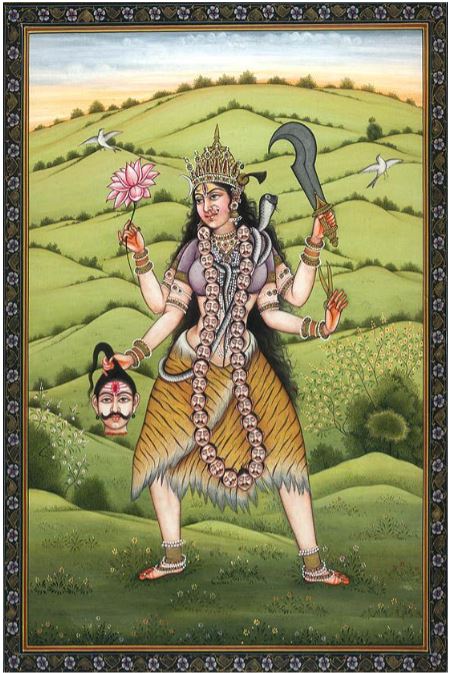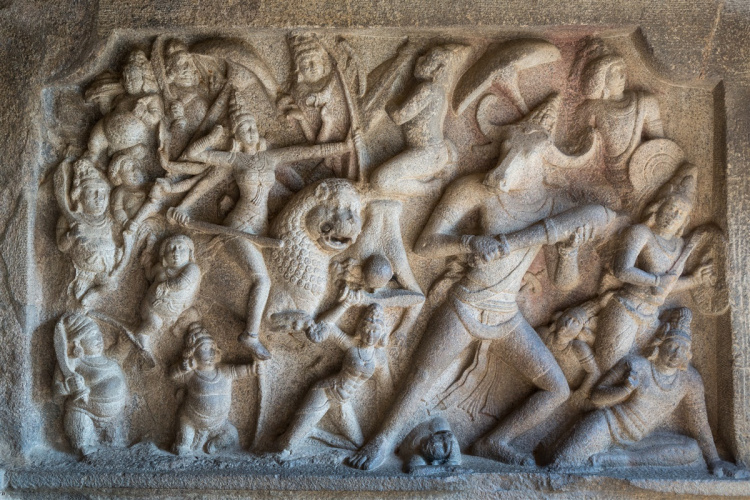
Durga is the name of the Goddess who personifies the sum total of the powers of all the male gods combined. When she vanquishes the fierce buffalo demon named Mahisha, she is described as having many arms, each holding a different weapon: bow and arrow, trident, discus,
1/n
1/n

shield, sword, mace, and the conch shell that sounds the start of battle. The horizontal lines on her arms are sectarian markings. At the moment depicted in this painting, she has succeeded in beheading the buffalo demon and
2/n
2/n
shooting arrows into his true form that climbs from its neck. Artists in foothills of the western Himalayas, where this work was made, depicted Durga’s mount as a tiger—lions and tigers had synonymous meaning throughout India as emblems of shakti, or divine creative energy.
3/n
3/n
Image Reference: Durga Slaying Mahisha, c. 1700-1710. India, Pahari Hills, Nurpur school, early 18th Century. Ink and color on paper. The Cleveland Museum of Art, Mr. and Mrs. William H. Marlatt Fund 1960.51
#durga #Mahishasurmardini
n/n
#durga #Mahishasurmardini
n/n
• • •
Missing some Tweet in this thread? You can try to
force a refresh








